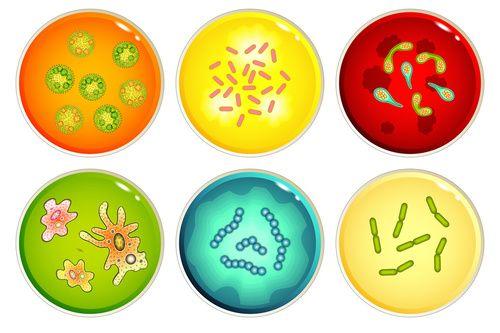Functional foods they are a beneficial and healthy supplement in the context of an overall balanced diet and an active lifestyle. Let's find out better.
Probiotic foods among functional foods

Functional foods, what they are
In recent years, the concept of "food" has undergone a radical transformation to the point of attributing to food, in addition to their nutritional and sensorial properties, also an important role in maintaining health, psycho-physical well-being and the prevention of some pathologies .
Among these we find functional foods, food products designed to offer, compared to traditional foods, an extra benefit in the improve psycho-physical well-being and contribute to reducing the risk of certain diseases as part of a normal diet.
They are foods characterized by additional effects due to the presence of naturally present or added components (generally non-nutritious) that interact more or less selectively with one or more physiological functions of the organism (biomodulation) while continuing to remain "foods" since they cannot be defined as functional foods pills, tablets or supplements of any kind.
They must therefore be distinguished from supplementary and / or fortified foods and from those defined as "dietetic" which are not intended for healthy subjects but for people with particular pathologies under specific medical indications.
The concept of functional foods is not totally new; in Asian areas, influenced by Chinese culture, foods and medicines have often been considered to be derived from a single source. The term functional foods originated in JapanAnd. In the 80s, the health authorities of this country recognized the need to improve the quality of life in parallel with the increase in the life expectancy of an increasing number of elderly people in order to control health costs.
Therefore, the concept of foods specifically developed to promote health or reduce the risk of disease was introduced by first launching the “fibe mine” (soft drink enriched with fiber) from Otsuka Pharmaceutical. In 1991 the Japanese Ministry of Health and Welfare established the criteria for the identification and approval of a specific category of food, called FOSHU (Food for Specified Health Uses) and also regulated their nutritional labeling allowing them to be later marketed under this brand.
While in Japan traditional functional foods are considered as a separate category of foods, in Europe and the USA, on the other hand, talking about functional food means adding functionality to a existing traditional product not constituting a separate category of food.
Why are functional foods so good?
Functional foods, they say
From a practical point of view, a functional food can:
- contain of course the functional component;
- contain the functional component that is added to the food by technological or biotechnological means to increase / add its concentration;
- be a food from which it was deleted or modified a particular component (for example, to improve bioavailability).
Food enrichment serves to optimize the supply of nutrients which are often taken in insufficient quantities. However, it can actually be valid, effective and safe, only taking into account the possible interference with various food and nutritional factors and in particular, with the chemical composition of the starting food.
There are, in fact, chemical-physical parameters and physiological conditions that can influence its effective usability. Among these are the stability within the food product, the bioavailability for the organism and the possible interaction with other food components.
To attribute specifications health properties and / or physiological to foods or their components, it is necessary to follow a rigorous scientific process based on three sequential levels:
- first level: identification and understanding of the interaction mechanisms between food (or component) and cellular biochemical functions, in order to demonstrate the potential physiological effects;
- second level: development of models and methodologies to demonstrate these effects and their consequences through human nutrition studies;
- third level: human nutrition studies to demonstrate, beyond functional effects, a benefit on health, including the prevention of diseases.
You can learn more about the relationship between nutrition and health: discover all the guides

Functional foods, properties
These are products that may contain several active components divided into the following categories:
- Probiotics (consisting of live microorganisms such as lactobacilli and bifidobacteria capable of positively influencing the balance of the intestinal bacterial flora and helping to strengthen the immune system);
- Prebiotics (soluble fibers such as fructooligosaccharides-FOS and inulin which can play a particularly important role thanks to their ability to selectively promote the growth and metabolic activity of one or more bacterial species considered beneficial for the health of the host. Recent studies have demonstrated their effectiveness also in favoring the absorption and therefore the bioavailability of some microelements such as calcium and magnesium and in positively influencing the metabolism of cholesterol);
- Symbiotes (which contain in their formulation both a probiotic and a prebiotic component. This means that by taking a food of this kind the body introduces microorganisms capable of exerting a positive action on the intestinal flora and, at the same time, a non-digestible food ingredient from the enzymatic kit human which, having reached the intestinal lumen intact, acts by selectively stimulating the development and activity of probiotic bacteria and therefore favoring the rebalancing of the intestinal flora);
- Dietary Fiber (soluble and insoluble)
- Grassi (monounsaturated and polyunsaturated which reduce the risk factors of cardiovascular diseases. In the literature there are numerous scientific studies that demonstrate how the intake of omega 3 fatty acids (w3), eicosapentaenoic acid (EPA, 20: 5) and docosahexaenoic (DHA, 22: 6) with diet, you determine a reduction in plasma triglyceride levels which represent a risk factor for cardiovascular diseases);
- Plant extracts (Carotenoids such as beta-carotene, lutein and lycopene, polyphenols and flavonoids, phytoestrogens, phytosterols, isothiocyanates, sulphides and thiols contained in abundance in foods of plant origin);
- Vitamins (especially vitamins C, D, E and group B useful in the treatment of arterial hypertension);
- Minerals (such as calcium, selenium, zinc, magnesium).
Probiotic foods among functional foods: find out what they are
Functional foods, allies of
In Europe, in the last decade, there has been a significant increase in consumer interest in the combination of nutrition and health. Indeed, demographic trends and socio-economic changes have stimulated the production of foods with greater health properties.
Functional foods, by improving a specific physiological function beyond their role in body growth and development, can contribute to:
- slow down cellular aging (oxidative stress) fighting free radicals. Requires a satisfactory intake of antioxidants (polyphenols, carotenoids, flavonoids, vitamins) to balance oxidant activity and defense systems;
- strengthen the immune defenses;
- improve the intestinal functions (including microflora balance, immune activity, bioavailability of nutrients, motility of intestinal transit);
- reduce risk factors for diseases to the cardiovascular system by controlling cholesterol and triglyceridemia.
In conclusion, functional foods can really bring health benefits; it is important, however, to maintain a balanced perspective and to be aware of the fact that they do not represent a magical solution to health problems but that they can be a beneficial and healthy supplement, as part of an overall balanced diet and an active lifestyle.
READ MORE
What are prebiotic foods and what are they for
Other articles on functional foods:
> 10 functional foods and their characteristics
> The nutritional elements of functional foods


























